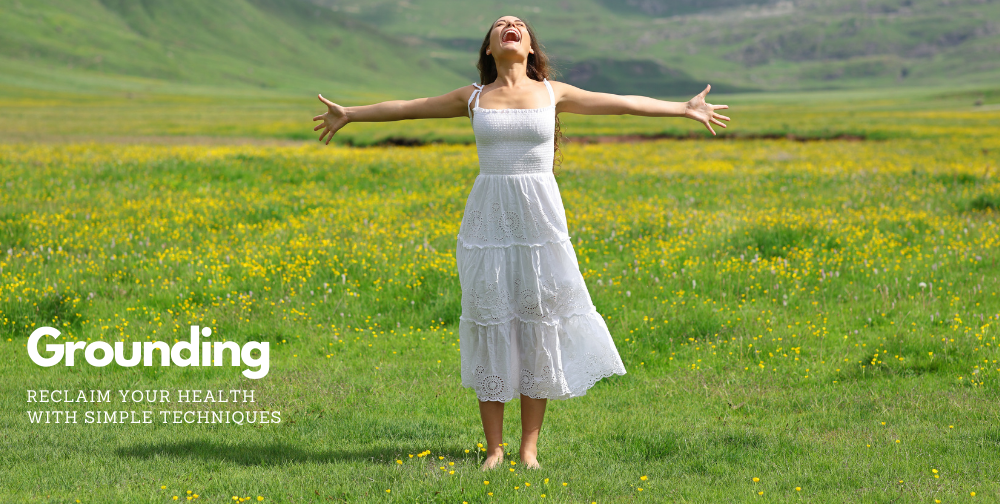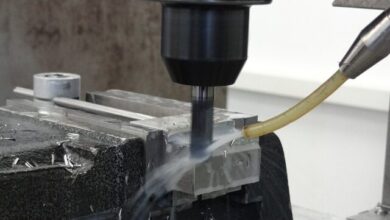Grounding in the Digital Age: Reclaim Your Health with Simple Techniques

In our hyper-connected world, it’s easy to feel overwhelmed by the constant barrage of notifications, emails, and digital noise. I’ve found that grounding—reconnecting with the Earth’s natural energy—offers a powerful antidote to this digital overload. Grounding, also known as earthing, involves simple practices like walking barefoot on grass or sand, which can significantly improve mental and physical well-being.
As we spend more time glued to screens, our bodies and minds crave a return to nature. Grounding helps reduce stress, improve sleep, and boost overall health. By incorporating these practices into our daily routines, we can reclaim our health and find balance in the digital age. Let’s explore how grounding can transform our lives and offer a much-needed respite from our tech-heavy lifestyles.
Understanding Grounding in the Digital Age
Grounding helps counteract the negative effects of constant digital connectivity. By reconnecting with the Earth’s energy, grounding aims to rejuvenate our mental and physical well-being.
What is Grounding?
Grounding, or earthing, involves direct skin contact with natural surfaces, such as grass, sand, or soil. This practice facilitates the transfer of electrons from the Earth’s surface to the body, which helps to neutralize free radicals and reduce inflammation. Regular grounding sessions can enhance sleep, lessen chronic pain, and improve overall energy levels. Common grounding methods include walking barefoot, sitting or lying on the ground, and using grounding devices like mats or straps.
The Impact of Digital Technology on Our Health
Constant exposure to digital technology affects our physical and mental health. Prolonged screen time can cause eye strain, headaches, and disrupted sleep patterns due to blue light exposure. Additionally, the nonstop influx of information and notifications contributes to stress and anxiety. The electromagnetic fields (EMFs) emitted by electronic devices can negatively impact cellular health and disrupt natural biological rhythms. Grounding helps mitigate these effects by restoring the body’s natural balance, reducing inflammation, and enhancing resilience against digital stressors. Regular grounding practice can be a valuable tool in maintaining health in a technology-driven world.
The Science Behind Grounding
Grounding, used effectively, can offer numerous health benefits supported by scientific research. Here’s how it impacts the body and what recent studies have uncovered.
How Grounding Affects the Body
Connecting with the Earth’s surface regulates the body’s electrical charge. Free electrons from the ground enter the body, neutralizing free radicals and reducing inflammation. This process enhances blood flow, decreases pain, and improves sleep quality by balancing the circadian rhythms. Grounding fosters parasympathetic nervous system activation, promoting a state of relaxation and reducing stress.
Recent Research on Grounding and Health
Studies demonstrate grounding’s efficacy in various health domains. Research published in “The Journal of Environmental and Public Health” indicates reduced inflammation and improved immune response due to grounding. Another study in “Integrative Medicine: A Clinician’s Journal” shows significant pain reduction in patients with chronic pain conditions after grounding therapy. These findings reveal grounding’s potential in managing health in the digital era.
These insights illustrate how grounding can be a powerful tool, enhancing overall well-being amid constant digital exposure.
Practical Grounding Techniques
Grounding, or earthing, is more accessible than many realize. Here, I outline simple techniques to practice grounding both indoors and outdoors.
Indoor Grounding Methods
To practice grounding indoors, consider these methods:
- Earthing Mats: Use an earthing mat on your bed or under your desk to simulate direct contact with the Earth’s surface. According to the Earthing Institute, these mats can help reduce inflammation and improve sleep quality.
- Earthing Sheets: Sleep on earthing sheets designed to connect to the Earth’s charge through a grounded outlet. They aim to enhance sleep and recovery by neutralizing free radicals in the body.
- Grounding Shoes: Wear grounding shoes at home. These shoes have conductive soles allowing electrons from the ground to flow into your body, maintaining your connection to the Earth’s energy.
Outdoor Grounding Activities
Connecting with nature is an effective way to ground yourself. These outdoor activities can help:
- Walking Barefoot: Walk barefoot on grass, sand, or soil. A study in the Journal of Environmental and Public Health found that this simple practice can reduce stress and improve mood by directly grounding you to the Earth’s surface.
- Gardening: Digging in the dirt with bare hands or using minimal protection can help you absorb the Earth’s electrons. According to research, gardening not only grounds you but also boosts mental health by reducing stress and increasing physical activity.
- Swimming in Natural Bodies of Water: Swimming in lakes, rivers, or oceans promotes grounding. Immersing yourself in water connects your body directly to the Earth’s natural conductive properties, benefiting overall health.
Using these indoor and outdoor grounding methods, it’s possible to reclaim health and reduce the adverse effects of digital overload.
Incorporating Grounding into Your Daily Routine
Staying grounded in the digital age requires integrating simple, effective practices into your hectic schedule. For more information, visit here to find grounding information and products. Here’s how to make grounding a natural part of your day.
Daily Grounding Exercises for Busy Individuals
Incorporate short grounding exercises to balance daily digital exposure. Spend just five minutes, preferably in the morning, standing barefoot on natural ground like grass, soil, or sand. This brief connection with the Earth can stabilize your body’s energy levels.
Another effective method involves yoga or stretching routines that include standing poses, practiced on a grounding mat. This approach allows simultaneous stretching and grounding, maximizing your time without requiring a dedicated outdoor space.
If you work long hours at a desk, take short breaks to touch a grounding pad with your bare feet. This simple action can reintroduce Earth’s electrons, countering the adverse effects of prolonged device usage.
Creating a Grounding-Friendly Environment at Home
Designate specific areas within your home for grounding activities. Incorporate grounding mats or sheets in your bedroom, as sleeping grounded helps improve sleep quality by reducing inflammation.
Add a small garden or indoor plants to your living space. Engage with these plants regularly, whether by watering or touching the soil, to create daily grounding moments even when indoors.
Consider using grounding footwear at home. Grounding shoes or slippers can maintain your connection with the Earth’s electrons, especially on non-conductive floors. This practice makes grounding a seamless part of your routine as you move throughout your home.
By integrating these techniques, anyone can reclaim their health and mitigate the negative impacts of a digital lifestyle.
Conclusion
Embracing grounding in our daily lives can significantly counteract the negative impacts of a digitally saturated lifestyle. By reconnecting with the Earth’s energy we can improve sleep reduce pain and boost our energy levels. Simple practices like walking barefoot gardening and using grounding mats or sheets can make a big difference. Incorporating these techniques into our routines helps create a grounding-friendly environment at home. Let’s take charge of our health and well-being by integrating grounding practices into our busy lives.





